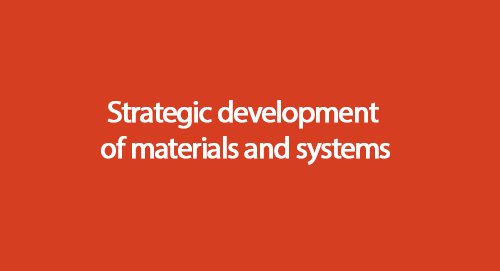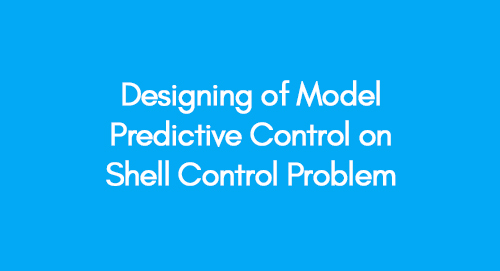
The UK and its Trading Partners
January 28, 2021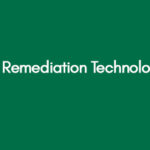
Soil Remediation Technologies
January 28, 2021Abstract
Driving inspiration from the fact that ‘nature is as old as human life on earth’. This establishes a sense that natural systems have long been used to solve human problems by observation and study of natural designs, systems and processes. Nature can teach us about systems, materials, processes, structures and aesthetics; in fact these are some of the main lessons we can learn. Scientists are digging deeper into the molecular and atomic structure of some of the nature’s best designs to solve the most demanding human problems in today’s era. Thanks to modern technology, the inexistent can now be visualized using 3D printers and software and microscopic objects can be magnified for a comprehensive imitation.
Nature and ecosystem are giving new directions to explore and fabricate solutions to complex problems and issues. ‘This study strives to explore new ways of increasing architectural sustainability by introducing the use of organic concrete. In this paper, two main eco-friendly solutions are brought in light and discussed on the basis of their ability to help in pollution control, carbon cycle regulation and adding sustainability and resilience in architecture’. Choosing the right material will not only help eco system to regenerate but also restore to its previous state.
From the literature reviewed and the study completed, it was found that Bio-concrete and Hypertufa both are excellent building material choice, helping the building by thermally regulating and cutting the energy consumption. Furthermore, detailed analyses of nutrient systems’ structural performances, sedimentation systems, experimental analyses on moss along with its tectonic sustainable design has been presented in this paper.
Key words: Bryophyte, Sandstone, Bio-concrete, Sustainable, Nature, Materials
Chapter 1; Introduction
1.1 Background
Biology-based design is a rational process which aims to find the most elegant solution in a creation of practical value, by developing patterns in a specific, formative framework. As such, design ideas that mimic biological structures are found in the concept of providing convenience to the consumer, whilst preserving function as well as the environment. All natural objects have their own characteristic form and protections, with functions evolved in accordance with the laws of nature. Biology-based design strives to mimic these functions. The idea of biomimetic design has made respectable improvements over the years, and is now able to extend to the design of complex structures, involving innovative facades and interior-designs.
The field of biomimetic design engages in social participation to widen this biological point of view, connecting design concepts with cultural phenomena. In this regard, biomimicry has been performed in a social phenomenon naturally formed, and this has led to a new consilience from an environment and design point of view, displayed in ecological terms. However, this has still not equipped it with rationality in real-world implementations, as there are still various other problems in the evolution of this design method.
The environment may contain abstract concepts, but almost all of it is tied to human existence. Humans require recognition from the ecological point of view, and unless they can coexist in a symbiotic relationship with the environment, specific measures must be initiated to address issues of pollution. In other words, an integrated and multi-disciplinary approach of the state is presented by a design. Subsequently, nature’s life systems can be seen as making overtures to sustainable growth in architecture. Nature has its way of offering us a sustainable system that is energy efficient and structurally well thought off.
Utilizing nature’s strategies, scientists can achieve a technologically advanced stage that will be self-sufficient and beneficial to humans as well as ecosystem. Heat regulation by imitation of green microorganisms is among the top researched subject these days. The system can not only increase energy efficiency but also will be easily renewed. Solar energy panels, wind turbines, and natural heat pumps are among such energy efficient solutions taken from nature’s way of sustainable system. Similarly, architect engineers are close enough to achieve the structural imitation of that of some of nature’s best architectural models. They are resilient, sustainable, cost efficient and long lasting which is all excellent for the survival of current ecosystem. Scientists have accomplished in decoding the complex mathematical functions behind some of nature’s most amazing structures.
Nature has always been fascinating man in terms of organization, survival skills and adaptation to change. With the new technology, scientists and engineers have actually been able to see the details, this has led to changing of tools, material and ways the buildings were constructed in the past. Energy efficient and eco-friendly material had helped both nature and living beings. Technology has changed our living style for good and humans are more informed about nature and aware of how it can be saved.
1.2 Purpose of the Study
‘Design’, which is based on nature, is a conceptual and visual representative factor. “Nature has had approximately 3.8 billion years’ worth of inventing experience” (Lee, 2011). In other words, biomimicry conceives designs beneficial to humans and to the environment through observation of the shape and characteristics of the living, and trying to apply these into a design effecting good function.
This body of work is focused on plant biomimetic which are influenced by plant root systems; nutrient absorption for sustainability. This idea is able to improved and expanded upon through analysis of tectonics and maintenance structures to grow bryophyte. Also it is about the coral linearity preparation which something dealing with porous densification. This research and experiment is very coherent geometry study principles. A linear clear process that creates complex geometry is the one that is able to build something physically. Design and fabrication of a façade component for pavilion is done in London Kew Garden. Which is based on a filamentous geometry and material that has an appropriate porosity and pervious for moss to grow.
The work has developed a general concept that incorporates different approaches, linked to ideas of controlling the conditions of vegetation, especially moss. This will relate to the intertwining of design and technology into the dynamics of natural form (Peters, 2011). Moreover, these new biologically-based sustainable architectural panel designs may be incorporated into other computational digital models and into fields such as CNC milling, casting and 3D sand printing by a new biomaterial, which this study will also cover.
1.3 Structure and Methodology of the Study
This research is an attempt to establish a link between biology and architectural design involving step by step exploration and changes that the ecosystem has went through eco-systematics. It starts with the exploration of the influence of biomimicry on vegetation's sustainable life systems, and on architecture. These principles are then abstracted for use as specific design concepts. Those novel concepts can then be applied in design with computational simulations and grow actual species in a physical space, London Kew Gardens. This has a potential to allow for to produce a panels by bio-concrete to sustain the moss which based on a range of material tests with different ingredients, method and geometry. This is all about a study for pervious materiality to produce bryophyte façade and panel.
The structure of this research can be divided into five major steps:
- Foundation of idea: show the technical applications of plantfibres by exploring the principles of nature, especially plant root system, and identifying them with biomimetic architectures.
- Geometry pattern study: involve computational simulations to study the selected algorithm, “Diffusion-limited aggregation” which is a logic of moss growth. It is related with branched sediment system. Who was working with this field?
- Basic and environmental analysis of species: involve selection of a single species, moss, in nature for analysis and investigation of the principle of evolutionary growth. Why moss is interested?
- Material research tests: Investigation with a range of material tests to produce adequate bio-concrete, for examples, materials ratio, and with porosity, pH levels, permeability and geometry structure.
- Design and fabrication: Design and produce a three-dimensional panel in accordance with sustainable growth living patterns based on the adequate material and fabrication technique, opening a link between sustainability and biomimicry.
Chapter 2; Biological Technology in Architecture
The chart in below explains the order of processes involved in nature’s principle cycle. Nature does not spend more energy that it needs; it tries to fit in the situation by careful adaptations and changes according to external environment. Recycling is one of the most glorious gifts of nature that has helped all the ecosystems involved in it.
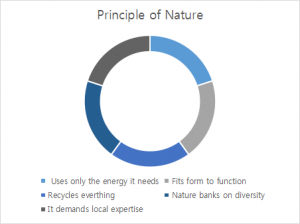
Figure 1Principle of Nature (source: Benyus biomimicry innovation inspired by nature, 1997)
Nature is diverse; a food chain is a good example of how various organisms form a ‘step’ in the ‘ladder’ of natural ecosystem, disturbance or absence of one can affect the whole chain. The natural design of the system was explained by McDonough and Braungart as follows;
“Nature doesn’t have a design problem. People do…Instead of using nature as a mere tool for human purposes; we can strive to become tools of nature who serve its agenda too.”
(McDonough W. & Braungart M)
Biological unique formation process can be supported by parametric modeling techniques and genetic algorithms, including the Fibonacci sequence and non-linear patterns, to effectively generate architectural forms. A system applying bio-adaptive structures, practical applications, parametric algorithms, and clarified genetic formations is a possible approach in the formation of an effective and creative design (LEAD, 2007).
Bio mimicry’s applications in architecture revolve around the generation of a strong, self-organised, self-healing material for use in the fundamental functions of a building, capitalising of natural processes. It has been said that biomimetic approach in architecture can go way beyond simply sustaining the system. This not only will give us a design that will help the ecosystem to regenerate and restore to its previous form. Such kind of an architectural design needs understanding of our ecosystem so to revive the natural ecosystem that has been mostly destroyed by nature. Biomimicry of plants focuses on characteristics, principles, material and tools of architect designs to help nature.
Designers are able to research potential biomimetic solutions without an in depth scientific understanding or even collaboration with a biologist or ecologist if they are able to observe organisms or ecosystems or are able to access available biological research. With a limited scientific understanding however, translation of such biological knowledge to a human design setting has the potential to remain at a shallow level. It is for example easy to mimic forms and certain mechanical aspects of organisms but difficult to mimic other aspects such as chemical processes without scientific collaboration (Pedersen Zari, M. 2007)
The realm of natural occurrence acts as a source of inspiration for us to ponder upon. While learning from Mother Nature is as old as a human being, but in the modern era of technological advancement, this approach is gaining new dimensions in a multitude of disciplines. Sometimes, it inspires us in ways that are beyond human comprehension and makes us ponder upon the marvelous rationality and designing of natural world around us. Combined with mathematics, Mother Nature offers us an organization so balanced that it serves as guidance for architects and engineers to comprehend the densities of geometry and shapes. The concept of non-linear, complex and modeling geometry has helped us explain even the non-uniform, random structure of a tree (Casti, 1989).

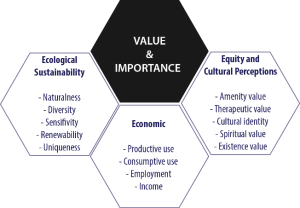
Figure 2Value of Sustainable developments(Source: internet)
Ecosystem can be categorized into three major types: economic, ecological and socio-cultural value. It is important here to note that ecosystem is divided keeping in mind the human benefit and needs. Humans are the benefiting agents; valuing the various aspects of natural ecosystem using nature-inspiring models and techniques
It is therefore safe to say that for a given ecosystem, directive functions and integrity of endowment and ecosystem parameters such as complexity and variety measure the ecological worth or value. As most of the functions and ecological processes are inter-related, they depend on each other like a chain; complex system conditions must be taken in account in order to evaluate the sustainability of the system. Sustainability is nothing but healthy interactive relation between processes and ecological functions.
Human well-being hugely depends on ecological conditions. Natural environment (ecology) is an important factor in determining the socio-economic values, social norms, and public opinions and views of humans living in a certain ecological condition. Many studies reveal that social, cultural and spiritual reasoning have a link with ecosystem process of humans. Natural system thus plays an essential part in welfare, safety, health and financial wellbeing of a viable civilization (McLennan, J. F. 2004).
Decision making process is effected and hence dependent on convolutions and indecisions in ecological functions, such as non-liners dependencies, socio-dynamic interactions and irreversible processes.
Chapter 3; Structural Performance in Nutrient System
3.1 Plant fibers for Technical Application and Identify the Cases
The inspiration for this research is related to explicit, implicit and complex characterizations through bio-mimicry. The morphology and syntax of vegetation is employed biologically, in terms of formal and behavioral logics rather than aesthetics. The architecture of plant root systems affects numerous functions carried out by the roots. Roots of terrestrial plants fundamentally grow downwards while shoots grow upwards in response to gravity (Miller, 2005); one of the fundamental factors that affects the growth and development of all living organisms. Such tropisms to capture behaviours or to potentiate new manufacture systems. We can use this tropism systems to advantage/ once we understand this tropisms we can start to push what plant can do or how might consider root system.
Table 1Shoot and Root Functions
|
Consists of shoot system and the root system |
|
|
Function of Shoot System - Photosynthesis - Reproduction - Storage - Transport - Hormones |
Function of Root System - Anchorage - Absorption - Storage - Transport - Hormones |
The most motivating part of the plant’s growth is the root system and its characteristics. In particular, the inherent complexity of roots which feature complex geometry and temporal dynamics aspects depicted in the figures below, and their methods for drawing nutrients from the surrounding soil.
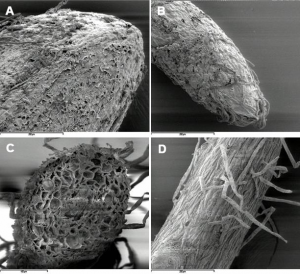
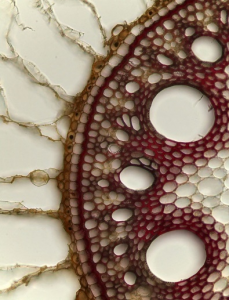
Figure 3 Cryo-scanning electron micrographs of poplar roots, clone: A, primary root apex;B, secondary root apex, C secondary root cross-section; D, root hairs. (Source: Tognetti, R, 2008)
These complexities are incorporated into the concept of root architecture (Figure 1-2). Root geometry is complex due to the motion of individual substructures within the space of each root, the relative locations of each root relative to the others, and the possible overlap of their “zones of influence”. These textures can apply in future robotics work. See Figure 3. Suitable techniques may be able to incorporate these principles of ‘zones of influence’ into designs allowing adaptable structures to draw an adequate supply of water from the environment without external human input. The design would require the fabrication of a growth pattern of the correct density in order to properly emulate a biological system, in particular, capillary action with respect to water.
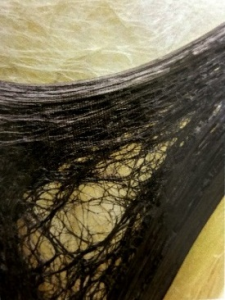
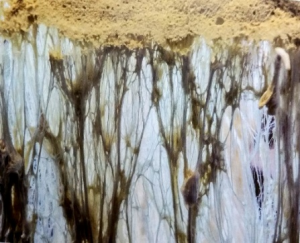

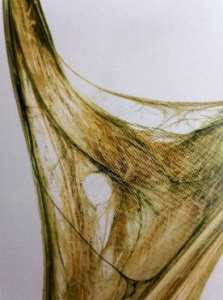
Figure 4 Robotic Foaming, 2011 (source: Brayer. Marie-Ange; Migayrou. Frederic, 2013)
As shown in Figure 4, the non-linear fabrication process opens up new morphogenetic possibilities for architecture, which as a result becomes both more heterogeneous and more effective. In this respect, non-linear formation is the core of the architectural design process, and the focus is on the inherent potential of computation to generate space. How do these non-linear systems interact and operate within geometry, in response to a set of architectural criteria? (Borries & Walz, 2007).
In case of a human design influenced by biological knowledge, the concerted design development depends on knowledgeable people which ecological research background rather than on a human driven design problem. A well-known example is the scientific analysis of lotus flower. What surprises the scientists is the fact that lotus flower, despite growing in swaps and unclean waters, emerges out as a clean beautiful flower. This has led to many design innovations as detailed by Baumeister (2007), on microbiological level of technology. The Sto‘s Lotusan paint is also developed inspired by this plant which enables buildings to be self-cleaning, as shown in the figure below;

Figure 5Lotus flower life emergence (source: Baumeister, 2007)
Biological approach influences the engineers to think outside the ‘box’ i.e. the predetermined ways and design problems. This results to interesting discoveries and unthought-of ways to solve a problem and technologies to come up with a design solution. Biomimetic designs are the result of shifts of human designs based on solution of a general problem (Vincent et al., 2005). Perhaps the most inspiring examples of bio-mimicry combine functional properties with aesthetic expressions.
Non-linear formations are a continuous supplementation and development, and is an effective tool to express advanced architectural forms that suit human nature. (See Figures 6-8). With sustainable development as a theme, a non-linear structural design emerges from a simple "functionalism" of traditional geometry and modernism, with a variety of free-spaces representing a period characterized by influence on the development of human society. Which mean, non-linear formations are dynamic, complex and random. The concept of a fractal as a non-linear element indicates that metaphorical order is inspired by the theory of natural science.
With the help of digital innovation, advanced mathematical algorithm, strong computational power and functional representation of complex fractal ecological processes, the duplication of complicated form of vegetal shapes is made conceivable. Since the 3D geometry and non-uniform shapes of nature are better understood and converted into mathematical algorithms and theories, the development process is made very easy for engineers and architects. The resulting structures are more structurally logical and optimize the resources it uses.
Figure 6(Left-top) Spiraling Skyscraper Farms for a Future Manhattan by Eric Vergne
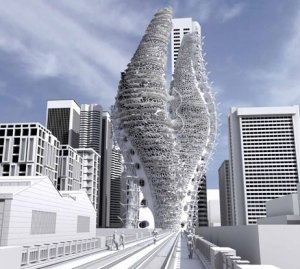
Figure 7(Bottom). Spiraling Skyscraper Farms for a Future Manhattan by Eric Vergne
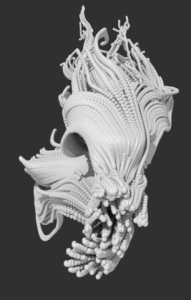
Figure 8 (right top). Digital simulation of the root’s fibre pattern with a bubble-shaped effection. (source: Ahn, Chae Ah, 2014)

According to Scott Camazine in 2003, “The new aspect of contemporary architectural design is the adaptation of self-organizational bio-systemic logic using the parametric digital modelling techniques”. This was based on models of the plant cells of ferns, allowing biomorphic skyscrapers to be designed, by Eric Vergne (Figures 6). This design is keen on assemblages cultivating formal, structural and functional analogies with nature, and is fascinated with sustainable and morphological design innovations inspired by morphological root patterns (Chino, 2011).
To specify, it has a structural similarity of the root section with Figure 6 in their design that is capable of co-existing with building and nature by freely wind and sunlight to pass through the space from out to inside. The repetitive honey comb structures of complexity and overall simplicity have emphasized an exquisite harmony to create a softness and aesthetic (MaMabolo, M 2007). Based on this, the digital simulation (Figure 8) has a repetitive of bubbles as a structure which has been influenced by these architectural designs and plant root system pattern. The bubbled structures are able to transfer the wind and sunlight to create shades by giving gaps between each of bubbles. At the same time, it gives overall softness of the surrounding areas (Birkeland, J.2002).
Height of a structure does not necessarily determine its efficiency but rather the ability to organize the space that can be both, interactive and support each other in terms of air and sunlight (Chino, 2014). A potentially sound interior will not only sustain itself but also the space around it. The user can very well sort out the difference while living in the environment that is the outcome of excellent design and programmed infrastructure (D, Lee. 2011). 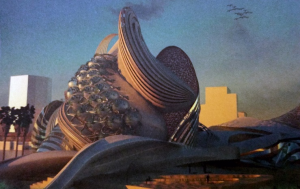
Figure 9 Rapid prototyping’ by Joanna Szulda (source: Dunn, Nick, 2012)
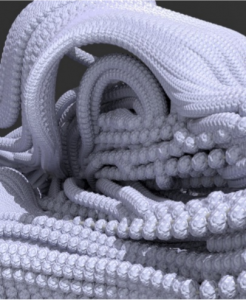
Figure 10 Digital modeling study of the root/branches (source: Chae Ah. Ahn, 2014)
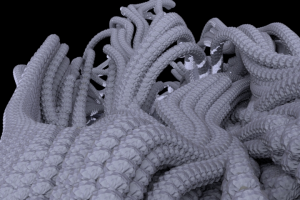
Figure 11 Digital modeling study of the root/branches (source: Chae Ah. Ahn, 2014)
Rapid Prototyping’ has an impact on work under progress, as the digital simulations demonstrate similar bubble structures. Such structures can undergo metamorphosis when fractal effects are applied to the surface of the material in question. The bubble surface enables an innovative natural form with an irregular order and size to the molecules (Figure 10). Its growth pattern is obtained from properties of growths following a mangrove root system. The underlying similarities lie with the use of a combined set of repetitive geometrical operations at differing levels of scale. This is simple and intuitive to use but at the same time is capable of giving rise to highly complex forms of space and structure, based on biology (McDonough, M., & Braungart, M. 2002). To apply the rough texture, it presents the contrast between shade and un-shaded areas. By apply the bubbles’ shape and arrange its irregularity effect in size and order, a surface can be produced rather than only make a repetitive pattern (See figure12).

Figure 12 Simulation of root with two different molecules (source: Ahn. Chae Ah, 2014)
By using morphological transitions to change the shape, and the effects of the materials, it is a possibility to become a reality in the physical world, a plurality of ontologies that have been created during construction emulating biological growth. Full-scale application in the field of architecture can be achieved by repeating these basic processes, the cumulative effects of which would be akin to continuous biological growth.
Figure 13 The Hydra Tower (source: Vlastic et al, 2011
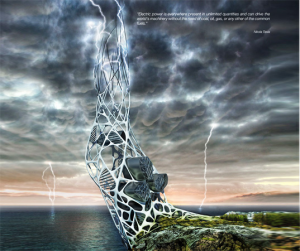
Figure 14 The Hydra Tower (source: Vlastic et al, 2011)
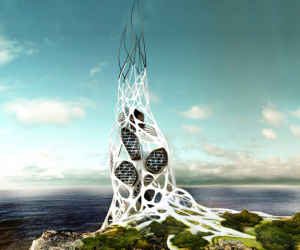
The tentacles of ‘The Hydra Tower’ superstructure are used to harness electrical power from lightning. It has strong tree roots anchored to the ground beneath the structure keeping it perfectly stable. Similarly, the work completed by Ahn and Chae (Figure 15 &16) demonstrates the nutrients (energy) absorbed and their travel through the root. This concept creates a constant dialog between space organization and structure organization, represented by two systems of curves. These curves operate rules for a woven structure combined with rules for filling space by subdivision, and thus passing from a linear element to a surface, and finally, volumetric element (Benyus, J. 2002). Moreover, the idea of harnessing electricity is similar to the ‘mineral and nutrients absorption system’ in plants: a vital mechanism to storage energy. Their movement evolutions were visually analyzed in figure 15 and 16.
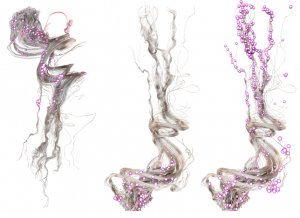
Figure 15 Digital model – Analysis of Nutrient absorption (Ahn, Chae Ah, 2014)

Figure 16 Digital model – Analysis of Nutrient absorption (Ahn, Chae Ah, 2014)
Architects are most interested in the structural distribution of root for the stem stability as well as sustainability and root length density to determine the erosion control of land. Other architectural characteristics such as the geometric patterns, root alignment and placement, branching arrangement all depend on how firmly the rot has held the strong structure. This has led structural engineers and mathematicians to dig deep into the relationship between overall natural structures and their link with the root system. The main links are mentioned earlier, rests of them are found to be very weak and of insignificant value comparatively (Fan Shu-Yang, Bill Freedman, and Raymond Cote, 2004).
The computer generated 3-D models have been achieved (see figure 13 and 14) by using simple formulas repeatedly at a point. These models are beautifully captivating and have an organic structure within them. Taking help from Euclidean geometry and using simple function obtained from geometric built of nature; we have designed a structure that is far better the real life irregular representation. Benoit Mandelbrot said and we quote “All of these natural structures have irregular shapes that are self-similar”. Conclusively, it has been observed that as we magnify the structure deeper, the inside of a pattern is merely the repetition of where we started with. It is a perpetual cycle of reputation until we reach the point of a single cell.
Chapter 4; Branched Sedimentation Systems
A brilliant concept was proposed on Milan Expo 2015, Italy that had a building tower shaped structure with air cleaning system similar to tree branches. The air cleaning concealment was to be designed by Roma studio Nemesi & Partners that externally consisted of biodynamic panels that reduce smog levels by filtering air from pollution and changing the pollution into inert salts. The tower itself is a geometric shape indicating tangled branches of trees. Building is highly sustainable with additional features such as photovoltaic grass on rooftop and photo catalytic properties of the concrete used in building design of structure
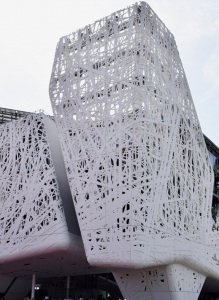
Figure 17 Façade: Toyo Ito Taichung metropolitan opera house Structural porous by curving walls (Source: Nanyang Technological University School of Art, Design and Media, Singapore)

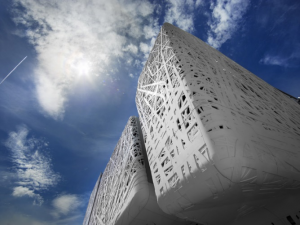
Figure 18 Façade: Toyo Ito Taichung metropolitan opera house Structural porous by curving walls
The structure of building consisted of a number of curved walls interconnected with inset flooring and a main support wall of the structure (EarthDr, 2015). The envelop that is extended all through the building structure is specifically chosen to be made from a concrete that is used to underground structures such as tunnels. Core structure is proportionally masses by the process of layering. This has helped in the overall structural sustenance (Wordpress, 2012).
After that, workers wrap a layer of a different blend using their bare hands. This is done for precise layering as the exact size and texture in design is of great importance. As a result of this layer, the outer surface (called the skin) serves as a live ecosystem that helps achieve an optimum temperature and radiance within a building by controlling the external environment impact.
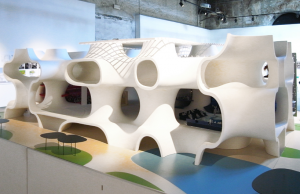
Figure 19 ; Fine Art Artist: Michael Kukla- carving
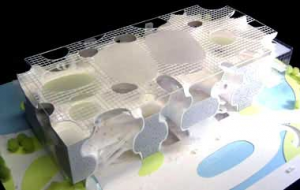
Figure 20 ; Fine Art Artist: Michael Kukla- carving
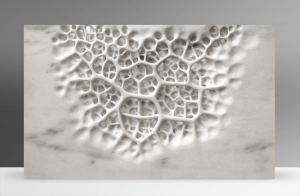
Figure 21 Michael Kukla’s work (source: Wordpress 2012)
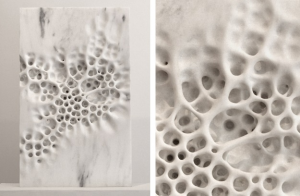
Figure 22 Michael Kukla’s work (source: Wordpress 2012)
Depending on the natural process being faced, the external as well as external environment acts as internal environment can act elastic or permeable. A group of Scientists from Spain are coming up with special type of concrete that can convert rainwater in beautiful designs of mosses and fungi on the walls. The inner designs are made using repetitive geometric shapes and structures made from material such as wood, lime, concrete, marble, slate and stone. Unlike drilling, craving and piercing the structures, they are simply in the form of 3D structures on a surface. This adds to aesthetic beauty and improves structural soundness. Both Toyo Ito and Michael Kukla’s style of work have been influenced a lot into this research. The idea of carving materials to produce a structural porous design that can is sound as well as practical.
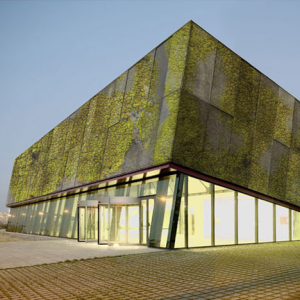
Figure 23 (left) Biological concrete for moss-covered walls, Universitat Politècnica de Catalunya in Barcelona, 2013
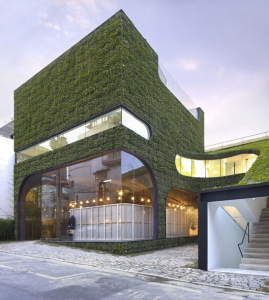
Figure 24 (right) Ann Demeulemeester’s store in Seoul, South Korea, designed by Minsuk Cho and Kisu Park, 2007.
A study made by the researches of Universitat Politecnica de Catalunya in Barcelona (2013) reveals that the biological concrete has the ability to grow organisms on its own surface and this has helped the architects and scientists to stop using complex structures for holding vertical gardens altogether. A report explaining the behavior of concrete stated that moisture and rainwater from the environment is locked by the concrete and helps the microorganisms such as algae, fungi, bacteria and simple plants to grow. The outer layer is responsible for organisms’ habitat whereas layer is waterproof, hence restraining the structure of the building to be affected from the growth. The outer layer functions in reverse to that of inner, that is, it locks the moisture in, preventing it from escaping back to the environment. Outer layer also performs insulation by trapping carbon di oxide from air and hence acts as a thermal insulator. The “biological concrete” is under the process of patenting. Biological concrete appears to be in the form of mosses. So far a biological concrete that can support life and growth of pigmented organisms has been patented by Structural Technology Group.
Chapter 5; Laboratory Investigation with Moss
5.1 Characteristics of Moss
According to Steve Pike, ‘the innovative use of living matter within design’ (Cruz & Pike, 2008) is drawing upon the potential for constructing new materials, enabling the realisation of visionary forms marking a radical shift in style, scale and theoretical understanding in the vital role that architecture plays in how we live and work with living matter. The concept will propose to redefine architecture as an evolving species whose very materiality can be generated by the physical, biological and climatic context in genuine natural habitats with use of new biomaterials.
The efforts in this research have been focused on the creation of a new material applicable to biomimicry in a physical space. One such material is moss possesses a number of desirable qualities: its ability to block sunlight, its ability to boost heat conservation, its ability to supply oxygen, whilst requiring only water for growth and reproduction. This happening in nature, the way that growing in nature not be the way they grows on this building systems.
- W. Bates (2000) summarized nicely human relationships with bryophytes presentin the environment: "Bryophytes are familiar and attractive ingredients in many types of natural landscape. Their shaggy coverings on branches and boughs, crags and boulders, in waterfalls and on woodland banks, add distinction to the larger scene. Less appealingly, they grow occasionally on bizarre materials, like the leather of a discarded boot, or a rusty iron pipe. Even in modern cities where air pollution and the built environment may seem unrelenting, there are bryophytes able to colonize crevices in masonry, soil accumulations in gutters, and to soften the otherwise geometrical wildernesses of roof tiles with their rounded cushions."

Figure 25 Collection of diverse type of moss from the Hampstead heath in London (source: Ahn, Chae Ah, 2014)
Mosses add to the beauty and practicality of a place. They are excellent for giving the garden an ancient appearance which makes the viewer believe the place has been kept for a long time. They need very little maintenance and can combine with most of ornamental and shade-loving garden plants such as hostas, wild gingers, hellebores, ferns, trilliums, lilies-of-the-valley, and eucharis. They help in erosion control because of their moisture absorbing nature (Boumis, 2010).
Practical uses of moss in the Earth are tabulated as below;
|
Name |
Effectively |
|
Grimmiaceae moss, (Stephanie Stuber, 2012:p115) |
Given the ultra-light feature of the fabric, the moss can be thought of as the perfect plant for urban green landscaping, irrelevant of building type. |
|
Sphagnum moss |
Important effects on water chemistry. - It absorbs minerals and heavy metal through a process: chelation |
The following figure demonstrates the problematic aspects of developing new strategies and designs with previously untested moss, particularly with respect to gravity and sensitivity.
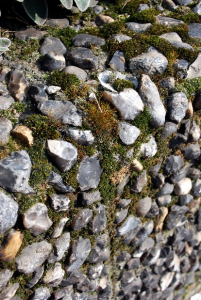
Figure 26 Moss spread across the little valley on concrete wallon 132 Hampstead Road, London. (source: Ahn. Chae Ah, 2015)
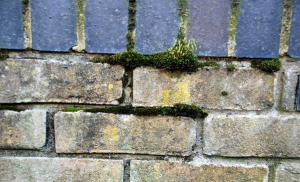
Figure 27 Hampstead Road in London. (source: Ahn, Chae Ah, 2015)
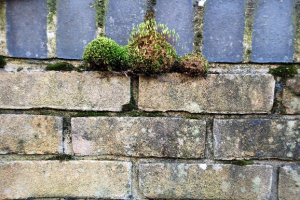
Figure 28 Hampstead Road in London. (source: Ahn, Chae Ah, 2015)

Figure 29 Hampstead Road in London. (source: Ahn, Chae Ah, 2015)
Mosses are autotrophs, producing their own food through photosynthesis, like other plants. Mosses also require moisture to effect reproduction. When they begin to colonize an area, moisture is what allows the young mosses to perform photosynthesis, which in turn allows for growth. However, a number of different species require regular periods of drying in order to survive. In general, the upper sections dry, and through capillary action, moisture is pulled upward to required areas, but moss spores settle in the most moist areas (as shown in the figures above) when on or atop various materials. Thus, they are commonly found in the vicinity of leaking water pipes and on walls which retain moisture. The table below shows significant contributions to qualities, functional and aesthetic of moss:
|
Qualities that engage the eye |
Moss add visual complexity to the indoor or outdoor and landscape, and have the special attribute of a constant sense of movement of their growth pattern, and changing patterns of shade and light. Green is also perceived as a restful colour in urban settings.
|
|
Scale |
Moss can also provide a sense of human scale
|
|
Design unity |
Create a sense of design unity, especially with relatively close spacing and continuity of planting
|
|
Maintenance |
They appear cared for, and adequate funds need to be allocated for their maintenance
|
|
Visual amenity |
Enhancing visual amenity through screening unsightly views, softening the mass of large buildings
|
|
Visual and physical interest |
Colour, and a cosy and romantic atmosphere. Providing sense of touch, like a cushion.
|
|
Season |
Providing awareness of seasonal/weather change
|
|
Unify |
Most significantly, the moss can provide a unifying element in an often visually diverse and sometimes chaotic urban streetscape and landscape. This design unity, however, does not become ‘boring’, as it is coupled with a sense of variety, with each moss having its own individual character.
|
Environmental Conditions necessary for Mosses Growth:
Mosses can basically grow on any surface (soil or no soil) as long as it is moist. But they are usually found on trees or rotten tree trunks and wood. They need air, moisture and sunlight so exposure to air is a must. The entire body of organism can absorb water and nutrients as they lack distinct systems. They lack proper vascular system and hence need high levels of moisture from environment.
Significance of Mosses for Environment:
Mosses ate the primary food source for small animals. It helps to preclude soil erosion and makes the soil fertile consequently increasing the productivity of land. Mosses stop the growth of weed and unwanted bushes on land. Play an important role in carbon cycle and hence restores the efficiency of ecosystem. They have the ability to lock moisture and hence keep the plant moist and hydrated during the dry spell. Mosses are known to be indicators of environmental pollution in ecosystem. Mosses play a meaningful ecological role such as water-retention and preserving landscape and surfaces of land for productivity. They control thermal environment and cut the fuel expenditures.
Moss architecture can be best used to protect buildings from dust and extreme environmental conditions. It also helps in climatic control in cities i.e. bringing down heat and extreme weather. Moss is known to be efficient in minimizing heat affects in buildings and hence act as a thermal regulator. They avert the effects of global warming.
Moss architecture can be best used to:
- Protect buildings from dust and extreme environmental conditions
- Climatic control in cities
- Minimize heat affects in buildings and hence thermal regulator
- Avert the effects of global warming
A new innovation has been made to enhance the support of certain families of mosses more than others. Since biological concrete is a natural habitat of microorganisms, this step is not hard to achieve by microbiologists.
5.2 Adhesive and Energy Production Experiments
According to United Nations, in 1981 the peat moss reserves were nearly equal to half of known natural gas reserves or 100-200 million tons of oil. Canadian native peat moss reserves are more than natural gas and forest reserves combined (J. A. Taylor and R. T. Smith 1980). Peat moss is a great substitute when oil reserves are under threat of war and other natural disasters. Moreover, it is a clean burning fuel with no pollution or threat to environment otherwise. Caloric value of peat moss is around 8000 BTU per dry pound which is why it has been thought off as an alternative fuel source by many researchers.
In the past moss was used only by developing and underdeveloped countries as a fuel source nut now most of Europe including Finland, Germany, Ireland, Poland, Russia, and Sweden. The former Soviet Union burned an estimated 70 million tons and Ireland 3.5 million tons of mosses in one year to produce electricity (P. H. Boffey 1975). The discovery of peat moss as a fuel was made back in 1903 but the processing cost had prevented its use as a widespread fuel. With technological advancement, it is now the number one choice of fuel being easy to harvest (can be planted anywhere from small pots in balcony to rooftops and even underwater). A major energy crisis that hit USA in 1970s resulted in a strong interest of scientists in alternative sources.
5.2.1 Moss Milkshake
Unlike algae and fungi, moss takes longer to grow. There is also a higher percentage of failure in growth when migrating to a different surface. Thus, this investigation is keen on blending moss with various substances: water retaining gel, buttermilk and water alone, to find appropriate surfaces and materials to facilitate growth. The buttermilk acts as both food and glue for the moss spores. A more amenable pH is another primary reason for the use of buttermilk (pH 4.4 – 4.8)
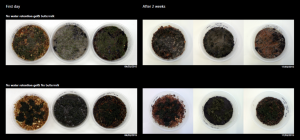
Figure 30 After two weeks, no growth is apparent. Being a relatively slow-growing organism, a wait of three to four weeks is required. Some fungi have grown on a number of the samples, producing a musty odour (Source: Ahn. Chae Ah;Liu. Chang, 2015)
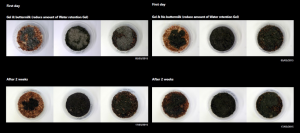
Figure 31 After two weeks, these milkshakes are all well placed on different surfaces and Gel & buttermilk with natural soil plate is growing grass bud (source: Ahn. Chae Ah; Yang. Micheal, 2015)
Use of the water retaining gel has caused the moss to clump together into a distinct circular shape. If they had been soaked in water before the blending with moss, it might have a more amorphous, glue-like form may have resulted. Whilst the adhesives used showed positive results, it was learned that sawdust was not an appropriate material for moss growth. In fact, it became impossible to visually identify their developmental geometry after one or two months.
As a result of this experiment, the petri dishes were closed on the top, so it was lack of circulate air. This means, there was only a very little moss growth but also growing a massive fungi all over the surface. Also it was not clear to see the moss’s growth by moss milkshake without washing moss. This problem should improve next time.
5.2.3 Microbial Fuel Cell Battery
Moss manipulates the presence of complex substrates in wastewater. Conversion of chemical energy into electrical energy is achieved by the catalytic reaction of microorganisms Electrons from the bacteria convert the substrate. Electrons flow through the circuit, charging the battery. The product contains carbon dioxide, water and energy
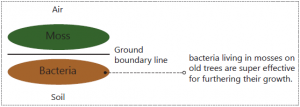
Figure 32 Bacteria must be with moss to grow and produce electrical power. Ahn. Chae Ah, 2015
The figures below depict the structure and the actual batteries, respectively, operating on the principle of the Microbial Fuel Cell, using the moss table developed by the University of Cambridge.

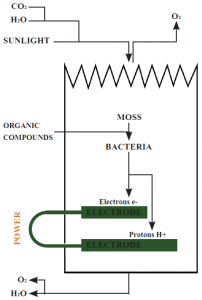
Figure 33 (left) Principle of Moss Table to produce electrical power, University of Cambridge, 2011
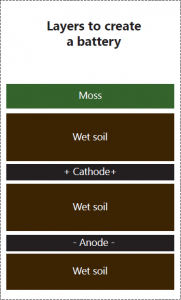
Figure 34 (right) Interior diagram of battery’s layers (Ahn, Chae Ah, 2015)
The experiment (Figure 25), it is depending on the number of batteries (size: H 15.7 x Dia 325ml, 1.5kg with soil) that can increase the energy as much as their numbers, but only for a lighting up a tiny bulb. If this battery technology can be adapted and incorporated into architectural design, it has both functional and aesthetic potential, with the capability or producing eco-friendly energy (Carlos, 2011).

Figure 35 Mud bacterial batteries investigation (source: Ahn. Chae Ah, Liu. Chang, Yang. Micheal, 2015)
Over the past few years, microbial fuel cells (MFCs) have been given noteworthy consideration because of their integrated wastewater treatment and their ability to produce bioenergy. Microbial fuel cells are bio-electrochemical reactors where bacteria act as a reducing agent and oxidize organic and inorganic compounds on anode. The protons and electrons are freed during the process which reacts with oxygen on cathode, reducing it to water (Logan B.E., Hamelers B., Rozendal R.A 2006). Its practical application to regenerate energy from waste water is still under progress and depends on constraints such as price of electrode and catalyst. It is a promising and efficient method for waste water treatment and bio-electricity production.
Chapter 6; Sustainable Tectonic Design
Once done with this first initial part, the next focus was design exploration. The design exploration is precede the making. They have their own complexities and subdivisions but the design is demonstrated in an animations which has a principle of branching and complex layer systems
6.1 Fractal Geometry, Lindenmayer System and DLA System
The use of L-system (Aristid Lindenmayer, 1925-1989) repetition allows the definition of complex shapes. These uses of mathematical language is checked against the rules of the first string and are evaluated on several occasions, and are used to generate the geometry of the results. The results of each evaluation gives the illusion of growth, which will be the basis for the next iteration of the geometry.
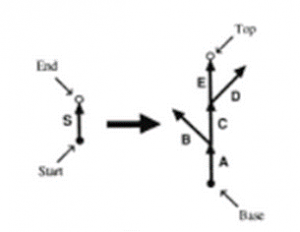
Figure 36Diagram depicting the general principle of L-system (source: Oliver Tessmann, 2008)
L-system rules (Figure 38) which imitate the branching pattern of self-similarity and the natural world order, are recursive in nature, leading to a fractal quality. They grow and form gradually, increasing in recursion to greater levels of complexity. Similar to these rules, in organisms DNA determines the underlying structure of biological growth. This growth, to provide a very compact description of the complex surface, is based on the principle of self-similarity. (Rohini Devasher, 2011)
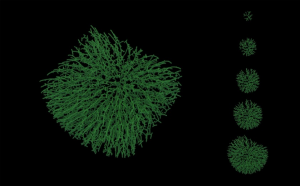
Figure 37 Coral linearity system, Liu Chang, 2015
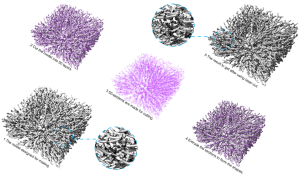
Figure 38 Digital cluster aggregation modelling of moss growth on tree bark, (Micheal Yang, 2015)

Figure 39 Simulation sequences of moss using Houdini's L-System from Youtube, 2011
Moss has no compass; simply thriving where moisture is available. Any circumstance where adequate water is provided to its bas will foster moss growth, whether it’s a trunk or a lean tree branch.
Mathematicians and scientists are trying to incorporate mathematical functions and formulae to achieve or at least imitate the most important mechanical and structural features of trees. Concepts involved in the process are still under development and revision.

Figure 40 Digital cluster aggregation modeling of moss growth on tree bark, (Micheal Yang, 2015)
“Diffusion-limited aggregation” is a model first proposed by Witten and Sander (Witten, 1981). This model is an ideal of the process in which matter randomly combines to form structures, such as crystal formation, bacteria growth and plant growth.
When particles in a diffusion-limited aggregation reach a certain distance from a fixed point, they cause movement to stop through the mechanism of a random walk. These connections feature many natural growth patterns with great connection density, the anchor points resemble the branches of an organization. This version includes the possibility of establishing a series of curved contour entry forms, like in Figure 41.
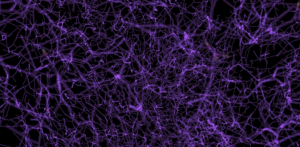
Figure 41 This fascinating pattern is an example of Diffusion-limited Aggregation in 3D created by Chang Liu, 2015.
The DLA algorithm itself is very simple; the primary computational challenge is the number of particles. As the number of particles increases, the proximity of the particles to one another decreases to fixed points, slowing the execution of the algorithm. Dealing with this problem, by limiting the positions of the particle at the connection points on the same grid dimension, is critical. At the same time, the DLA algorithm is added to the list of anchoring particles, is stored in a two dimensional matrix at the point on the grid position. This only means that position 8 is required to be tested, but the algorithm requires great flexibility (Klaus, 1996).
Structural optimization serves to create an authorization structure for access through the internal voids, tree bark for spores of moss arranged around the surface. It is this interstitial space where spores spread in order to strengthen the interaction. The vital point in moss’s growth separation is the living cycle. In other words, parts of the moss structure are dead due to unfavorable environmental factors interrupting growth during the creep, and then they are in order to grow steadily along to the little valley on surface again. However, not all of these disparate colonies are connected, as the spores that moss generates are dispersed and attach to random, water-rich surfaces. Based on this theory, designs capable of sustaining the vitality of moss require higher humidity.
6.2 How Scaffold Drives to Sustainable Growth of Moss by new biomaterial
Not only the pH, but other parameters that play a role in simulation of material such as permeability and surface roughness have to be controlled and modified to create a perfect biological concrete. A layered element is created that considers the structural, functional as well as aesthetic requirements. The three layers of biological concrete are the structural, waterproof and ecosystem layer. These layers have their own specific purposes i.e. providing structural support, preventing seepage of water and foster an environment for the mosses to grow.
The Biological Layer: This layer fortifies the growth and colonization of microorganisms by trapping moisture inside. It acts as a complex intermediate microstructure that preserves and expels moisture from environment. The water is main source of life for the microorganisms. A disjoined coating layer which serves as a converse waterproof layer is needed to retain moisture within. This layer allows the water to enter but does not allow it to leave; consequently, the flow of water is unidirectional which is utilized for the biological growth.
Keeping in view the environmental needs, biological layer has the capacity to trap solar radiations in order to regulate the thermal conditions inside the building. This, of course, is made possible depending on the difference between inside and outside temperature variability. Biological concrete has a number of benefits; it acts as an insulator for the building from extreme environment, it serves as a thermal regulator that not only saves energy but also helps in maintenance, it also increases the aesthetic beauty of the building. The overall exterior look is greatly enhanced by the ‘living’ painting drawn on it. The surface does not need painting and color to be covered with. It can further be used in gardens and commercial as well as public buildings where the structure is to be blended with landscape or simply for decorative purposes.
6.2.1 Experiment with an Organic Bio cement, Hyper tufa
Tufa rock is layered with biological cement by hand to preserve its perfect surface details. The rock covered with rich green moss gives a very pleasant view to rock environment. Tufa now serves a great deal to increase the fertility, productivity and erosion-prevention of soil. The most important characteristic of Tufa is its ability to soak up water and hold it just like a sponge. This ability comes in great use when the rock is placed near a water source or a place where water seeps in slowly and gradually. Its porous structure claims excellent drainage and airing which means the important minerals can also be trapped well inside and deposited around the pores. High porosity is deemed a good quality for this cement (English Tufa Rock, 2013).
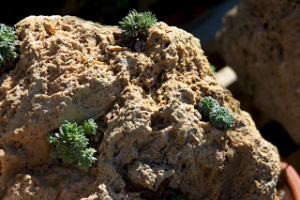
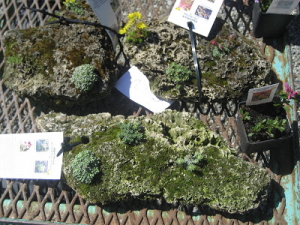
Figure 42 Tufa rock from Kew Garden in Richmond, Ahn Chae Ah, 2015
Structurally, Tufa rocks are up to 60% porous which gives them the property of light weightiness. This characteristic of Tufa rocks helps immensely in creating structures and arrangements. This also ensures a healthy amount of moisture retaining property even after a dry spell. This property is beneficial for plans residing inside the Tufa rocks whose roots can easily penetrate and tangle in the porous structure, absorbing calcium for healthy growth.
Plants are uniformly cooled down and kept moist by gradual evaporation. Plants continue to grow healthy even in hot and dry weather because of the moisture in Tufa rocks. Roots are not distressed because surface of rock is always on an optimum temperature and hence overall growth of plant is seen to be strong and flourishing.
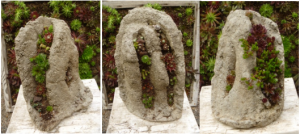
Figure 43 Hypertufa where plants can grow on, 2015
Hypertufa Tufa rock substitute. Hypertufa is different with tufa. It is a cement-based imitation used to create troughs and other lightweight containers; authentic tufa is a calcium carbonate mineral precipitate that occurs around lime rich bodies of water. This rock is made up of sponge cells and most commonly exists in countries abundant in limestone. This means that water is responsible for underground wearing and tearing of rocks, resulting in porous and spongy structures from original material.
Combination of Portland cement with elements such as peat moss, perlite, sand or vermiculite and water results in hyper tufa. This is an advanced and modified form of tufa having additional properties such as waterproof and temperature wearing/ tearing resistant. The end result of hyper tufa depends on the ingredients and their proportions. Hyper Tufa supporting plant lives are meant to be denser and stronger for plants to grow within.
Changing ratios can greatly affect the characteristics of hyper tufa. A common example is the creation of hyper tufa that can absorb and store water and nutrients has a ratio of 3:3:3:2 (peat moss: material: cement: water), here peat moss is increased to get the desired hyper tufa.

Figure 44 Hypertufa creation: base materials are peat moss, Portland cement (pure cement) and water.Mixed with perlite (right), mixed with 80 years old mortar (middle), and mixed with sandstone powder (right)
All the ingredients are combined and mixed well with water and left for 5 to 10 minutes for the mixture to rest. This is because peat moss takes some time to settle and absorb necessary water as compared to Portland cement. Sitting time of mixture is also quite important to get the desire results (Hypertufa Instructions, 2015).
A hypertufa made of slightly different proportions is required for joining two pieces together. By mixing sand stone powder from Perlite and mortar, bonding glue can be prepared for this task. The purpose is to give weight to hypertufa, making it sustainable and long lasting. Also use water with the bonding agent.
The use of mineral salt is recommended for plants in fissures as it works well in droughts and dry spells for the plant’s survival. Moisture from the bottom layers of soil is retained in warm weather. We know that the structure must be well hydrated and well as strong. Increasing the quantity of peat moss can be harmful because then the hypertufa becomes structurally weak and will break when wet. Hypertufa fissure planters need to be well hydrated for survival.
Conclude this experiment on one excellent quality of hypertufa; it hardens when in contact with air. This soft voltaic rock can thus play an important role as a building material. It can stay soft during construction and then hard, increasing the resilience and stability of building.
It is also excellent for supply nutrients, when mixed with peat moss and has a high porosity to grow moss on the surface. However, the purpose of research is not to make a new material which gives nutrients to moss. Production of adequate conditions in Bio-cement or Bio-concrete for moss to grow will be need for further study. Hypertufa is different with Bio-cement. Biocement, a material still being developed, is a combination of sand, cement and crushed limestone aggregate or other cement element materials with water.
6.2.2 Production of a New Biomaterial: Tests with a Range of Ingredient of Materials, and its Porosity and pH Level
There is two ways to achieve to produce an ideal bio-concrete’s porous by material itself and structural matter. This is a crucial to test with porosity by mixture of material itself. If it is possible to control the porous by material, it is also possible to have some problems with hardness and pH level of new bio-concrete.
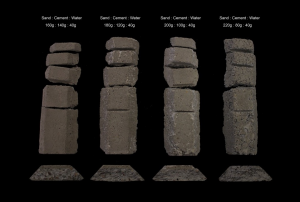
Test 1. Mixture test with pure cement and pure sand with water.
Based on the mixture details, the one with 20g amount of water is the ideal type to have further experiment with moss because the only problem was low porous, high pH level and high strength.
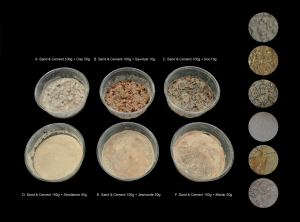
Test 2. Initial bio-cement ingredients tests with a range of materials with replacing premixed sand and cement
Replacing premixed product of sand and cement from pure cement (Portland Cement) which has pH 10. This product has blended with six different type of materials: clay, sawdust soil, bits of sandstone, jesmonite and mortar.
The powder of sand stones and mortar has after the friction. Premixed sand and cement is the main material to bind other materials, and each of mixture has blended with 40g of water. Finally, these petri-dishes are put on a shaker for 20 minutes to guarantee that it is mixed evenly.
It is expected to have hardness difference among to the different groups
As a result of this, sandstone powder (pH 7) and 80 years old mortar (pH 6) are the ideal to use because it has perfect porous, neutral pH level and hardness.
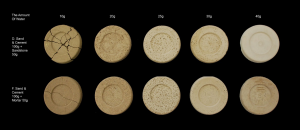
Test 3. Experiments according to the amount of water changes
Group of D and F, which have an enough firmness and low pH level, are taken as the material to have further research. In order to achieve perfect porosity, limited water should utlised in the mixing procedure. These five groups with different water ratio between 10g to 40g are tested and compared.
The 20g amount of water (above Figure). As a result of test with a range of water, it has high porosity visually when the water ratio becomes low.
The porous test should need to rather than only visual conclusion.
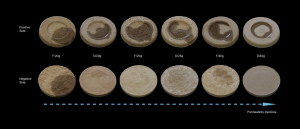
Test 4. Permeability test with sandstone powder based concrete
The moss has been growing on actual sandstones in the site, London Kew Gardens. This is why it has been chosen to experiment with sandstone. Moreover, after doing a series of test with materials, the sandstones have an excellent pervious, porosity, and neutral pH level. Using Portland cement results in a quick and hard hypertufa whereas mortar instead of Portland gives a less strong hypertufa can easily break because it is not rock solid.
There has an issue with the 80 years old mortar. The collection of mortar was from private home garden. It was hard to collect as much as needed and same old mortar was used for further experiment because recent mortar is more alkalized which is around pH10-11.
In this stage of experiment, permeable test must need to maintain water when there is no water in environment; water can drip down through the concrete having microscopic pores. The syringe is used to pour 4ml of water on the surface of each concrete piece. It takes same time and amount of water on each of the piece. Time of 30 seconds was given for water to settle and absorbed by concrete and photographs are taken to compare their permeability. As a result, concrete F/20g has the most reliable permeability, which also indicates that it has the highest porosity. However, these pieces have a problem with pH level. It is too alkali to grow moss (pH 10)
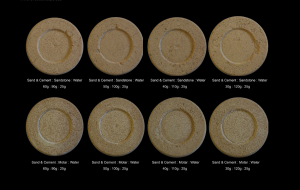
Test 5: Control the proportion of premixed sand and cement.
The Test 5 is about to control the pH level by control the amount of premixed sand and cement. Because the premixed sand and cement has pH level 10 to 11 which means even the sandstone and mortar have 5-6 pH, the cement rise the mixture’s pH level. Thus, the range of premixed sand and cement was reduced with same amount of water, to see the cement affection. As a result, the pH level was still high with pH 10.

Test 6. Moss-shake production with bacteria (yogurt), yeast (beer), carbohydrate (sugar) and hydroxide (water).
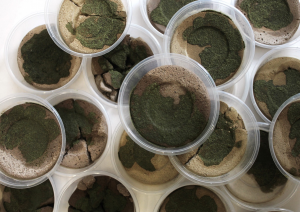
Test 7. Pour moss-shake onto the surface of bio-concretes to grow moss, Ahn.Chae Ah, 2015
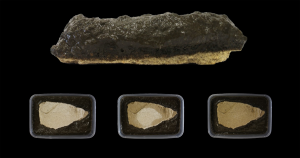
Test 8.
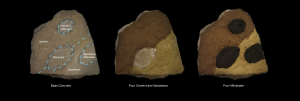
Test 9.
To conclude these series of experiments, it was successfully produce an adequate porous and hardness to keep water to supply food for moss. But, it still have a problem with the alkalized pH level of this new bio-concrete. To solve this problem, there has two ways of product bio-concrete: take times to provide an affection to the new bio-concrete by environmental matters such as rain, wind and sunlight to decreasing pH levels, or replace another materials rather than using cement because the cement make the concrete to be alkali.
6.2.3 Design panel: Structural Methodology
The structure of panel itself can aid in the sustainable development of moss. It is possible to control moisture and water levels by applying fiber structures on top of rough surfaces, incorporating screw or bubble shapes. These volumetric fibers are able to contain a limited amount of water with which to grow them naturally.
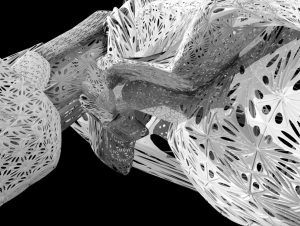
Figure 45 Conceptual design of biological scaffold that inspired by moss’s growth system. Ahn, Chae Ah, 2015
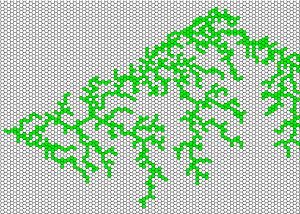
Figure 46 (left) DLA on a regular structure: a hexagonal grid. IBISC (Laboratory for Computer Science, Integrative Biology and Complex Systems), 2003
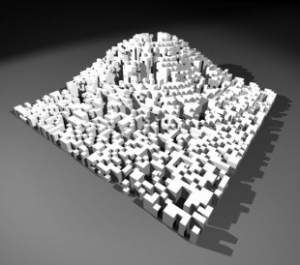
Figure 47 (right) form generation through cellular automata step 5, Architectural Association, 2007
The figures above (46 & 47) demonstrate structures generated with algorithms implementing cellular automata rule-based growth and scaled by a distinct automation to create a basic grid and fractal operation. As previously mentioned, these 2D and 3D fractals are underpinned by concepts that stop moss from growing only at the base (a result of gravity), when the design is installed vertically. That means, if they have a similar pattern as Figure 35, the water can across the three dimensional design and the landscape surface to spread moss, like their growth on tree bark and tree roots.
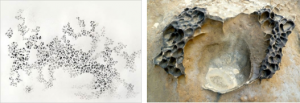
Figure 48 Moss colonies on the vintage leaking water pipe. Scott, 2012
Michael Kukla, a Czech sculptor experimented with mosses and used layers of ink to create an artifice of depth by making cellular fields. The microbiological structure of mosses has a fascinating geometry with complex and fragile yet a sound structure. The cellular geometry and structure resembles a set of tightly packed soap bubbles. And when used in sculptures, it leaves a subtle finishing texture to the body.
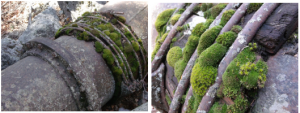
Figure 48b Moss colonies (Scott, 2012)
At some phases in the developmental sequence, if several small holes are included on the surfaces, then moss will be able to spread out externally, not only in the given tube. This is effected by, for example, rust and dew atop water pipes. The moss creates shaded areas, reducing the areas of pipe affected by direct sunlight. Thus, increasing the level of complexity in the smaller pores, and increasing the surface area of the outer wall helps to maintain moisture.

Figure 49 Boolean l-systematic bubbled plant root pattern to create tufted surface, Chae Ah Ahn, 2015
A wall panel that is tufted offers a great deal of advantages, not just aesthetically but more practically and functionally. Tufted wall panels give a softened and feminine look to the place; they turn a simple space or room into smart façade that offers a place for mosses to grown and offer a clean, filtered and fresh air to breathe in. It acts as a mini organic spa for the environment and humans living in it.
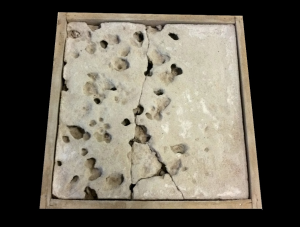
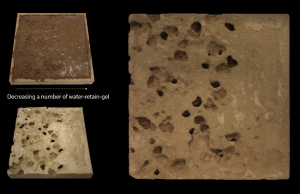
Figure 50 Handcrafted porous structure production with water-retaining-gels, Ahn. Chae Ah, 2015
Water retaining gel, which increasing its sizes when it absorbs water, is used to produce a range of pores density. This experiment is a handcrafted work with placing a number of water retaining gels and pour bio-concrete layer by layer. They are decreased from one side to opposite side. After it dried, it was very easy to take out dried water-retain-gels from the new bio-concrete and it was successfully worked.
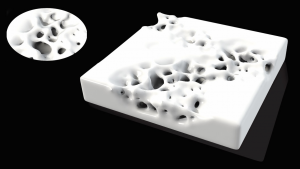
Figure 51 Marching cube and iso-surface technique to create pores, Ahn. Chae Ah, 2015
The Figure 51 has been influenced by sculpture artist Michael Kulka. Obtaining a mesh of a 3D surface using scalar fields can be done using Paul Bourke's marching tetrahedra methods to produce a soft carved pores.
- Control the level of pore depth:to make a space to capturing water by its structure. It is very similar definition as water channel system.
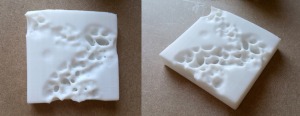
Figure 52 Marching cube and iso-surface technique to create pores, Ahn. Chae Ah, 2015
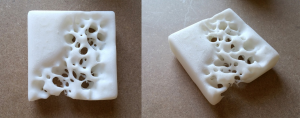
Figure 53 Marching cube and iso-surface technique to create pores, Ahn. Chae Ah, 2015
Prompt prototyping tools and 3D printers have made it easy to visualize a complex digital design way before they come into physical existence.
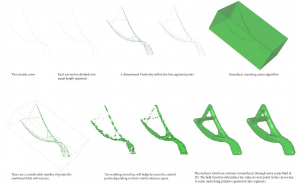
Figure 54 Moss growth diagram, Ahn. Chae Ah, 2015

Figure 55 3-D computerized visualization of internal moss structure

Figure 56 3-D computerized visualization of internal moss structure
Based on the application of computational modeling and material investigations for the maintenance of moisture to grow real moss, this paper will focus on the development of a bio-receptive façade for a pavilion sited at Kew London. Components in 1:1 or 1:2 scale, based on technical and tectonic features derived in the biological simulation. Roots designed with smooth curves inspired by plants will form a design where the public can experience an organic and natural environment
Realistically, there are two methods to produce a bio-receptive panel: symmetrical milling: to develop layers a top one another, and create an appropriate architectural biomaterial to be sculpted. CNC milling and rubber mold casting which will be discussed later in the chapter. However, the materiality itself is a core factor when consider the pH level of material on which to grow real moss. It must be composed of mixed materials, facing the air, with inner areas moisturized to allow moss to absorb the necessary fluid nutrients.
Casting:

If the design have holes in perpendicularly, it is possible for CNC to mill it. Mechanical resolution of 1 µm (0.001 mm) in axes is used by most of the CNC mills. This produces silk smooth finish and touch to complex parts that cannot be done by hand.
This means that if any piece of model cannot be reached unless another part is violated, then the essential geometry is left untouched and that piece will not be machined at all. Figure in the right shows two work pieces, the gray areas are not easy to reach. These parts will not be touched as the process may harm another important part so it is best to leave them as they are (Michal Zalewski, 2013)
Figure 58 Surface of moss
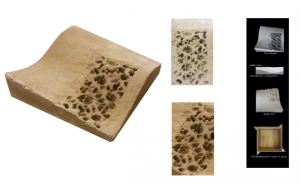
Figure 59 computerized visual of moss layering geometry
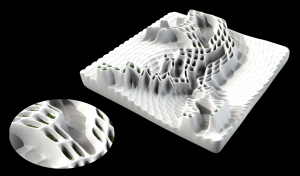
This is a correct experiment that has been taken out from earlier concepts and explains how sketches of sharp lines can be made into inconspicuous curves and mild lines on a curved surface. The design will be created in a 3D file and then the CNC machine will mill a piece of foam according to the 3D design pattern. Next is the process of pouring runner on piece of milled foam, it is then allowed to harden and dry. This will create a mold for further processes. Once the point has reached, we can now pour freshly created biological concrete on the mold. Applications to this technique include ceiling tiles, furniture articles and wall panels. It offers an excellent habitat for tufted style mosses to grow on a simple wall panel.
This project is about a branched sedimentation system. Bryophyte colonization pattern in moss is layered and different from the rest of many forms. New forms of binder and material mixture are created which is excellent while using with sand 3D printing machine. A direct casting is introduced without using conventional casting material such as milling or rubber. This material is a blend of kiln sand, fine powder of sand stone and cement tissues materials with a clear solution blinder. This helps in strong molding and excellent surface finishing. It is very similar to 3D printing as it uses the z-axis which gives depth and reality to x and y axis as well. The printing involves the use of an inkjet-like printer head that moves across the powdered material, gently depositing the binder liquid of selected parts of mixture. This method optimizes the use of powder. Layers of powder are laid on top of each other but once the model is ready, the unbound powder is discarded.
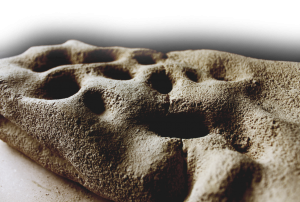


Figure 59 Various moss surfaces (source: internet)
It was also depending on the times to leave the printed sand mold in bed of powder. If it stays in there for a long time, the binder starts spreading out more to join more bio-cement, which becomes denser and strongly firmed but have an ugly structures with less pores. Contrastively, it becomes a perfect thin branch linear structure with a high range of pores when the mold took out quickly from the bed of powders. But it is weak. However, both of them have a great porosity of material and this has helped mixing any of them with sandstone powders and other cement tissues materials to grow moss with the right pH level of 6 or 7.
It has been observed that bio concrete that is made up of premixed sand and cement based sandstone has high level of pH. This elevated pH results in the inability of moss growth on it. Freshly prepared bio concrete needs some time to reach a pH suitable for microorganisms to grown on it. Environment makes the surface acidic by rainwater, wind and sunlight. On the other hand, hypertufa is excellent for moss growth on its surface. It requires little or no preparation before moss is spread on its pores, growing it into beautiful moss covered structure. Time required for the growth depends on environmental conditions and sunlight.
Conclusion
The purpose of this study was to find a biological solution to today’s challenging designs and architectural problems. This paper discussed various biological structural performance and organizational geometry found in plants. Nature’s design approach is energy, cost and ecologically beneficial in the long run. The paper has taken aspirations from plant roots and nutrient system, structure and built of mosses, energy production from microorganisms and moisture locking nature of bryophytes. The main concern of this research was to come up with a biologically approved and architecturally beneficial building material that can increase the sustainability of current designs.
Bio-concrete is an excellent option to not only increase the aesthetic look but also the overall efficiency of a built structure. Sustainable tectonic design and fractal design of mosses are further explored with the aim of using them as a biomaterial for sustainable architecture. Similarly the structural methodology of hypertufa is such that moss can easily grow on it. Hypertufa is very easy to manufacture on industrial level. This property can aid in thermal regulation, energy conservation and fuel production in the future. This paper is for anyone who wants to explore the use and prospects for biomaterial in tomorrow’s architecture and design.
References
Books
- Baumeister, D. (2007). Biomimicry Presentation at the University of Washington College of Architecture. Seattle.
- Benyus, J. (2002). Biomimicry: Innovation Inspired by Nature. New York: Perennial
- Birkeland, J. (2002). Design for Sustainablility: A Sourcebook of Integrated Ecological Solutions. London: Earthscan
- Boffey, P. M. (1975) The Brain Bank of America. McGraw-Hill
- Brayer, Marie-Ange; Migayrou, Frédéric (9th ed). (2013). 2013 Archilab: Naturaliser l'Architecture. HYX. pp266-267.
- Camazine, Scott. (2003). Self-Organization in Biology System.
- Cruz, Marcos; Pike, Steve (eds). (2008).AD - Neoplasmatic Design. Wiley. p22.
- De, Lee. (2011). Biomimicry-Innovations Inspired by Nature. Kids can press. p1
- Fan Shu-Yang, Bill Freedman, and Raymond Cote (2004). "Principles and practice of ecological design". Environmental Reviews. 12: 97–112
- Friedrich von Borries. Steffen P, Walz.(2007). Space Time Play: Computer Games, Architecture and Urbanism - the Next Level. Birkhauser Verlay AG. pp340-342
- A. Taylor and R. T. Smith. Aberystwyth: International Bracken Group, Special Publication No. 2, pp. 77–81.
- W. Bates (p. 248 in Shaw & Goffinet 2000)
- MaMabolo, M (2007).FCS Plant Production Level 2. Pearson Education South Africa Ltd. pp4-6.
- McLennan, J. F. (2004), The Philosophy of Sustainable Design. First Edition (June 1, 2004)
- McDonough, M., & Braungart, M. (2002). Cradle to Cradle: Remaking the Way We Make Things. New York: North Point Press.
- Michal Zalewski (2013). Home manufacturing tutorial for robot builders, model makers, and other hobbyists Copyright (C) 2013, 2014, 2015
- NG, Rashida; Paterl, Sneha (eds). (2013).Performativity Materials in architecture and design. Thames & Hudson. p47.
- Nick, Dunn (2012).Digital Fabrication in Architecture. Laurence King Publishing. pp60-62, pp66-73, p105.
- Oliver, Tessmann. (2008). Collaborative Design Procedures for Architects and Engineers. Oliver, Tessmann. P57
- Peters, Terri (ed). (2011).AD - Experimental Green Strategies: Redefining Ecological Design Research. John Wiley. p133.
- Vincent, J. F., Bogatyrev, O., Pahl, A., Bogatyrev, N. R., & Bowyer, A. (2005). Putting Biology into TRIZ: A Database of Biological Effects. Creativity and Innovation Management, 14, 66-72
- Zari, M. P. (2007). An ecosystem based biomimetic theory for a regenrative built environment. Sustainable Building Conference. Lisbon: [Personal communication]
Thesis
- Cocozza, C; Minnocci, A;Tognetti, R et al (2008).Distribution and concentration of cadmium in root tissue of Populus alba determined by scanning electron microscopy and energy-dispersive x-ray microanalysis. the Italian Society of Silviculture and Forest Ecology. p96-103.
- Logan B.E., Hamelers B., Rozendal R.A.; Schroder U., Keller J., Freguia S.m Aelterman P., Verstraete W., Rabaey K.: Microbial fuel cells: methodology and technology. Environmental Science and Technology 2006, 40, 17, 5181-5192
- Salma Ashraf Saad El Ahmar (2011). BIOMIMICRY AS A TOOL FOR SUSTAINABLE ARCHITECTURAL DESIGN TOWARDS MORPHOGENETIC ARCHITECTURE. Graduate School Faculty of Engineering, Alexandria University. p12-14
- W, MaDonough; M, Braungart. Rethink Architecture + Nature. Thesis Prospectus Cal Poly San Luis Obispo Architecture Department
Web-site
- Boumis, Robert (2010).How to Filter Aquarium Water With Sphagnum Available: http://pets.thenest.com/filter-aquarium-water-sphagnum-moss-12679.html
- Carlos; Peralta, Driver, Alex; Bombelli, Paolo. (2011). Biophotovoltaic Moss Table. Available from: http://thisisalive.com/biophotovoltaic-moss-table/
- Chino, Mike. (2011).Hydrogen-Producing Skyscraper Harvests Energy From Bolts of Lightning Read more:| Inhabitant - Sustainable Design Innovation, Eco. Available: http://inhabitat.com/insane-hydrogen-producing-skyscraper-harvests-energy-from-bolts-of-lighting/
- Chino, Mike. (2014).Spiraling Skyscraper Farms for a Future Manhattan. Available: http://inhabitat.com/dystopian-farm-by-eric-vergne/
- Devasher, Rohini. (2011). PERMUTATION solo show. Available from: http://www.mpiwg-berlin.mpg.de/PDF/Devasher_2011_Permutation.pdf
- Induction to Basic Ground-Water Flow. Available from: http://www.earthdrx.org/poresizegwflow.html. Accessed on: 13/07/2015
- English Tufa Rock (2013). Available at: http://www.english-tufa-rock.co.uk/aquarium/tufa-ph-filtration
- Guerrilla guide to CNC machining, mold making, and resin casting. Available at http://lcamtuf.coredump.cx/gcnc/ch1/
- Hypertufa Instructions. Available at http://www.gardensandcrafts.com/hypertufa_info.html#sthash.njuBSMKv.dpbs
- IBISC (Laboratory for Computer Science, Integrative Biology and Complex Systems). (2003). Cellular Automata and cellular complexes. Available from: http://mgs.spatial-computing.org/ImageGallery/EXEMPLES/Autocell/
- LEAD: Laboratory for Explorative Architecture & Design, Design Research Laboratory, Architectural Association, London. (2007). Generative Algorithms. Available from: http://www.l-e-a-d.pro/research/01-iws1/95
- Miller, Brandon. (2005). Moss Grows Strangely in Space. Available from: http://www.livescience.com/120-moss-grows-strangely-space.html
- (2012). Vintage Pipe Repair. Available from: https://seekraz.wordpress.com/tag/water-pipe/
- Some key facts about green roof. Available here: https://ecologyurbanismculture.files.wordpress.com/2012/02/greenroof-presentation.pdfAccessed on: 13/07/2015
- Witten, Jr; L, M, Sander. (1981). Diffusion-Limited Aggregation, a Kinetic Critical Phenomenon. Available from : http://prola.aps.org/abstract/PRL/v47/i19/p1400_1
Get 3+ Free Dissertation Topics within 24 hours?

















